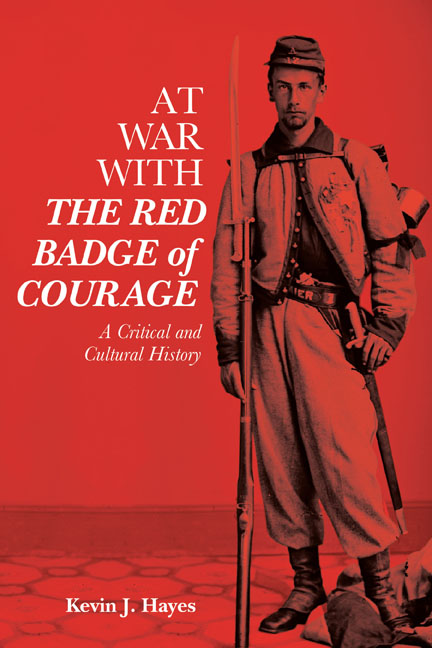7 - Trauma, Disability, and the War on Terror
Published online by Cambridge University Press: 24 November 2020
Summary
When President George H. W. Bush ordered the first US combat troops to the Middle East in August 1990 as part of Operation Desert Shield, newspaper photographers recorded the moment. An AP photographer caught the most memorable image: a picture of Corporal David Ellis of Chicago reading The Red Badge of Courage as he awaited a transport ship in Morehead City, North Carolina, the port of embarkation for the Second Division of the US Marine Corps at Camp Lejeune.
The photograph presents an image of a marine who has never been to war learning what it might be like by reading The Red Badge of Courage. The widely reprinted image startled me when I first saw it in 1990. It seems less startling now, that is, now that I have been studying the cultural history of The Red Badge of Courage and know that American service members have been reading it before entering combat ever since the Spanish-American War.
General Alfred M. Gray, Jr., the Marine Corps Commandant, would not have been startled by the image in 1990, either. The previous year Gray had instituted the Marine Corps Professional Reading Program. “I firmly believe that professional reading is essential to the professional growth of our leaders,” Gray said. “Marines fight better when they fight smarter. Systematic and progressive professional reading contributes directly to that goal.” Gray's list of required reading arranges book titles according to military grade from corporal to colonel. As part of the ambitious program, Gray included much more than military manuals and leadership handbooks. He also listed books about logistics and tactics, military biographies, histories of famous battles and war novels.
Corporal Ellis was reading ahead. Killer Angels, Michael Shaara's Civil War novel, was on the corporal's list. The Red Badge of Courage does not appear until gunnery sergeant. A headnote to the gunnery sergeant section provides the following instructions: “Read a minimum of two books (four ideally) annually, chosen either by the individual or the unit commander, from the following list” (“Program” 20). Besides The Red Badge of Courage, gunnery sergeants might have also read John A. Lejeune's Reminiscences of a Marine, the autobiography of a former commandant, one who had shaped the character of the modern Marine.
- Type
- Chapter
- Information
- At War with The Red Badge of CourageA Critical and Cultural History, pp. 167 - 186Publisher: Boydell & BrewerPrint publication year: 2020

